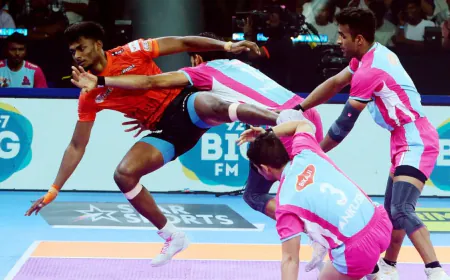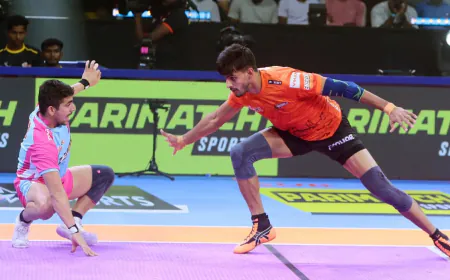Tennis-Ball Cricket and the Making of Future Stars-The Story of Rohit Sharma's Childhood
Discover how the game of tennis-ball cricket influenced Rohit Sharma's early life and helped develop his skills for his rise to become one of India's best batsmen.

Coach Cricket is a game, an emotion that lives in the hearts of millions. While dusty streets open up to gigantic stadiums, yet for many aspiring cricketing heroes, it all begins with a simple tennis ball. It has been a basis to hone up the skills which later on reach success with professional leather ball format. Rohit Sharma's childhood coach, Dinesh Lad, who received the Dronacharya Award for his contribution to cricket as a mentor, has been highly vocal in his support for the format, stating it is "vital" to a player's growth.
Tennis-ball cricket, for one, is getting renewed attention in terms of popularity and importance because the second edition of the Indian Street Premier League (ISPL) is yet ongoing. It is during these battles when young talents are clashing that Lad underlines the importance this format holds for the development of emerging cricketers while drawing a parallel with a factor that paved the way to stardom for players like Rohit Sharma.
Tennis-Ball Cricket-The Bedrock of Many Cricketing Careers
Dinesh Lad, who has closely observed cricketing careers of many change like these, felt that tennis-ball cricket provides ideal training to players. Recalling his experience, he said that he started his career as a tennis-ball cricketer before playing leather-ball cricket.
"Tennis-ball cricket is a tough format and I always advise young cricketers to train with it first. It really helps hone the key skills, especially batting, where players develop skills to play better pull shots, cut shots, and straight drives. In fact, it is a fantastic preparation for the sterner challenges of professional cricket," he added.
This type of cricket instills the necessary hand-eye coordination and reflexes in young cricketers, besides the decision of shots to be played. The most prominent advantage of tennis-ball cricket, however, lies in its adaptability. It can actually be played on any ground irrespective of its size or weather condition. Therefore, this game can also be played in the rainy season. Rohit Sharma made the maximum impact only during tennis-ball cricket.
Dinesh Lad has seen firsthand how early exposure to tennis-ball cricket helped Rohit Sharma, whom he mentored as India's current captain.
Rohit practised with a wet tennis ball, which skidded quickly off the surface. It honed his ability to judge pace and bounce, and ultimately made him one of the finest pull-shot players in the world. His effortless stroke play today is, in part, because of early training with a tennis ball," Lad said.
It is not uncommon to find many successful cricketers who started with a tennis ball to make their mark in professional cricket. It, therefore, makes an excellent stepping stone that gives players flexibility, technique, and innovative shot-making at other levels.
Indian Street Premier League (ISPL)-The Game Changer in Tennis-Ball Cricket
The Indian Street Premier League, or ISPL, has come out as a revolutionary outing for young cricketers to come forward and display their talent on a bigger platform. ISPL happens to be at its second edition where it has drawn attention from across the country.
Lad thanked ISPL for the initiative and said it would have been of great use during his playing days. "It is great to see a league like ISPL doing well. We did not have such tournaments for tennis-ball cricket when we were playing, and so many talented players went unnoticed. All credit to Suraj Samat for starting this league and keeping the spirit of tennis-ball cricket alive," he said.
ISPL has already seen some hot cricketing since it started on January 26 with six teams heating up the tournament. Even the excitement in the fans is still on as the league moves towards playoffs. The Qualifier 1 is going to be a real treat between Majhi Mumbai and Falcon Risers Hyderabad on February 12, and the grand finale will take place on February 15 at Dadoji Kondadev Stadium in Thane.
Can ISPL produce the next Rohit Sharma?
When asked if leagues like the ISPL have the potential to produce international stars of the future, Lad was positive. "Absolutely! We have already seen some exceptional performances, particularly from the bowlers, who have been restricting batsmen effectively. If a player consistently performs well, there's no reason why they can't transition into mainstream cricket, just like Rohit Sharma and even greats like Vivian Richards, who also started with tennis-ball cricket," he said.
Lad believes that even though it supports equality in chances to both batsmen and bowlers, the format helps the batsman to develop shot selection much better and reaction time much better too. "Pull shots, square cuts, and other attacking strokes can be considerably enhanced with tennis-ball practice," he said.
Tennis-Ball Cricket-A Global Phenomenon
While the tennis-ball game forms the origin of cricket in India, this game has gained massive popularity among the other cricketing nations. Tennis-ball cricket provided a refuge to some of the most aggressive batsmen in history played in the West Indies. Some of the greatest batsmen, Vivian Richards, learned their craft before moving on to do greater glory for international cricket.
Lad said the idea of nurturing tennis-ball cricket further will help India too. ISPL, which is actually a structured league, shows all potential of promising the future of young cricketers aiming to climb up the professional circuit.
Road ahead-Promising Future for Tennis-Ball Cricket
The Indian Street Premier League has been successful, and the encouragement it has received from cricketing stalwarts such as Dinesh Lad clearly indicates that tennis-ball cricket is the future. It is helping a new generation of cricketers come to the fore as it is giving a platform to young players to display their talent.
As the second edition of ISPL is going into an exciting climax, the tournament goes on proving that tennis-ball cricket is not just a pastime but a crucial stepping stone in the journey of any cricketer. With more potential cricketing superstars knocking at the doors, this format surely deserves better recognition and proper structured development.
For now, all eyes are on the knockout matches, where India's next cricketing sensation might just be waiting to be discovered. Whether or not ISPL produces the next Rohit Sharma, one thing is for sure: tennis-ball cricket will always remain a fundamental part of cricketing development in India.





















































